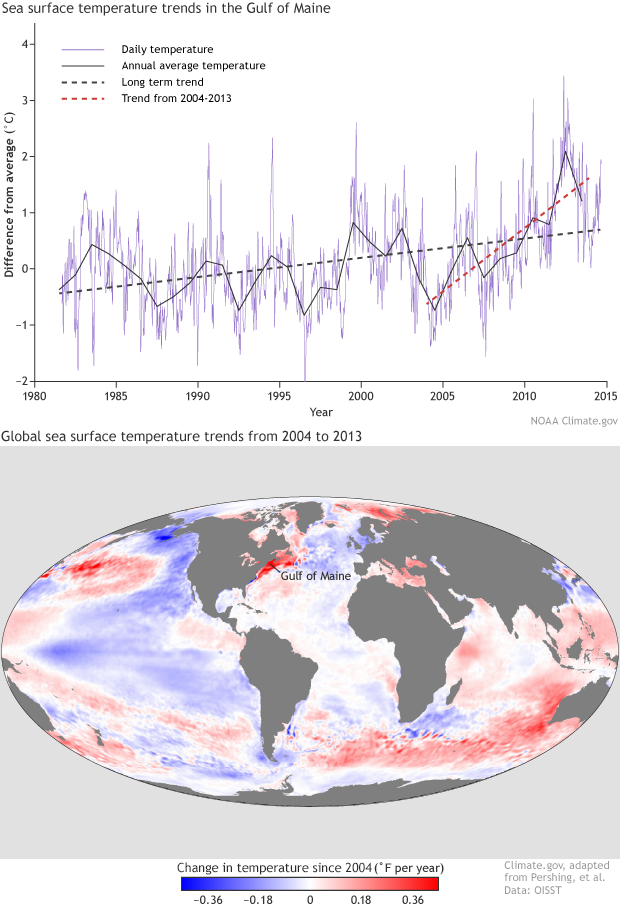Though it’s as tasty as ever, the lobster on your plate is coming from a different location than it did just 20 years ago. Warming sea surface temperatures from climate change are forcing populations of the American lobster (Homarus americanus) to higher latitudes than ever before—and upending fishing communities on the New England coast.
Departures and arrivals
The lobster industry in New York and southern New England has nearly collapsed. From 1996 to 2014, New York’s registered lobster landings dropped 97.7%—from 9.4 million pounds in 1996 (the state’s most profitable year) to 215,980 pounds in 2014 (the latest data available). The story is much the same in Connecticut, where landings fell 96.6% from the most profitable year, and in Rhode Island, which saw a 70.3% drop from its most profitable year.
“Former lobstermen in Connecticut, many of whom were formerly fishermen, had to switch to clam and oyster farming. A few are also farming seaweed as a second crop,” Margaret van Patten, Connecticut Sea Grant communications director, said in an email. “They have to be really flexible in adapting to available species.”
This doesn’t mean the actual lobster population is disappearing. In fact, populations are relatively steady; it’s the location that’s changed. While southern New England lobstermen have found increasingly empty traps since the mid-90s, Maine’s lobster fishery has boomed. From 1994 to 2014, Maine’s landings surged 219% to more than 124 million pounds.

No comments:
Post a Comment